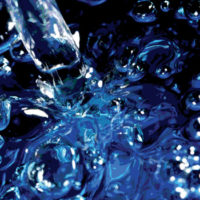A "Product of Choice"

Food sanitation provides great opportunities or challenges, depending upon how you like to view the "opportunities" at hand. One of the areas sometimes taken for granted is selecting the "right" product to remove fats, oils and greases. In theory, a good alkaline or alkaline/chlorinated degreaser will be your "product of choice." However, as most of you have probably found, various products perform differently and provide different benefits to you, your equipment and even your people.
As you look to make the right choice of product, there are a few variables to consider in making your selection.
• Soil load: Each facility deals with different amounts of fats, oils and greases. The more excessive the soil, the higher the pH you may want to look for.
• Surfaces to be cleaned: Stainless steel and "soft metals" are the most common surfaces in food facilities. If we are dealing with a combination of both, it is critical to make sure the "product of choice" contains a corrosion inhibiter (i.e., sodium metasilicate). If we are dealing specifically with stainless steel and soil loads can be on the heavy side, then we might be able to use a more aggressive cleaner (i.e., pH 13.5 to 14.0) to enhance our efficiency.
• Water source: Some facilities/sites are dealing with water you can virtually walk on. Detergents containing chelating agents are good at protecting the product from the hard-water minerals that may affect cleaning ability, foaming ability, rinsing ability and dilution ratio, in essence, minimizing the breakdown of the product and/or its cleaning efficiencies.
• Chlorinated versus non-chlorinated products: Typically, this choice is based on personal preference. However, the key issue in assessing these types of products is to remember that some chlorinated degreasers include corrosion inhibitors whereas others do not. So, if you are dealing with multiple metals in the facility and prefer to use a chlorinated degreaser, make sure your supplier/manufacturer confirms that the product contains the corrosion inhibitors needed to protect you and the equipment from potential problems.
• Proportioner/"right" dilution: Once the product of choice has been selected, a key component for the success of your program will be how well you "dial" in the dilution. Work with the chemical supplier. Mix products at the appropriate dilution ratio based on the "soil load" you are trying to remove so that you will be able to work toward your goal as being a low-cost producer. Most importantly, incorporate a user-friendly proportioner that will allow you to achieve the cost efficiencies for which you are planning. By doing so, it will also contribute to the management of your budget.
At times, the end user views all products as being the same. However, as you begin to evaluate your "product of choice," rest assured that some products clean better, dilute differently, foam differently, rinse easier and, although the material safety data sheet may show similar components, there are those "secret active ingredients" that differentiate/distinguish one product from another. The best way for you to be completely satisfied with your choice is to have your potential supplier work with you and your sanitation crew and demonstrate the benefits of not only its product but also its program. As we all know, a supplier’s program can make a huge difference in the results you can expect to achieve with your sanitation program.
In closing, if you review some of the scenarios discussed above, identifying your "product of choice" will be an easy decision. More importantly, it will generate the cost efficiencies you plan for and will protect you, your company and the brand recognition you have worked so hard to develop and protect. Good luck in making the right choice!
www.spartanchemical.com
Looking for a reprint of this article?
From high-res PDFs to custom plaques, order your copy today!




